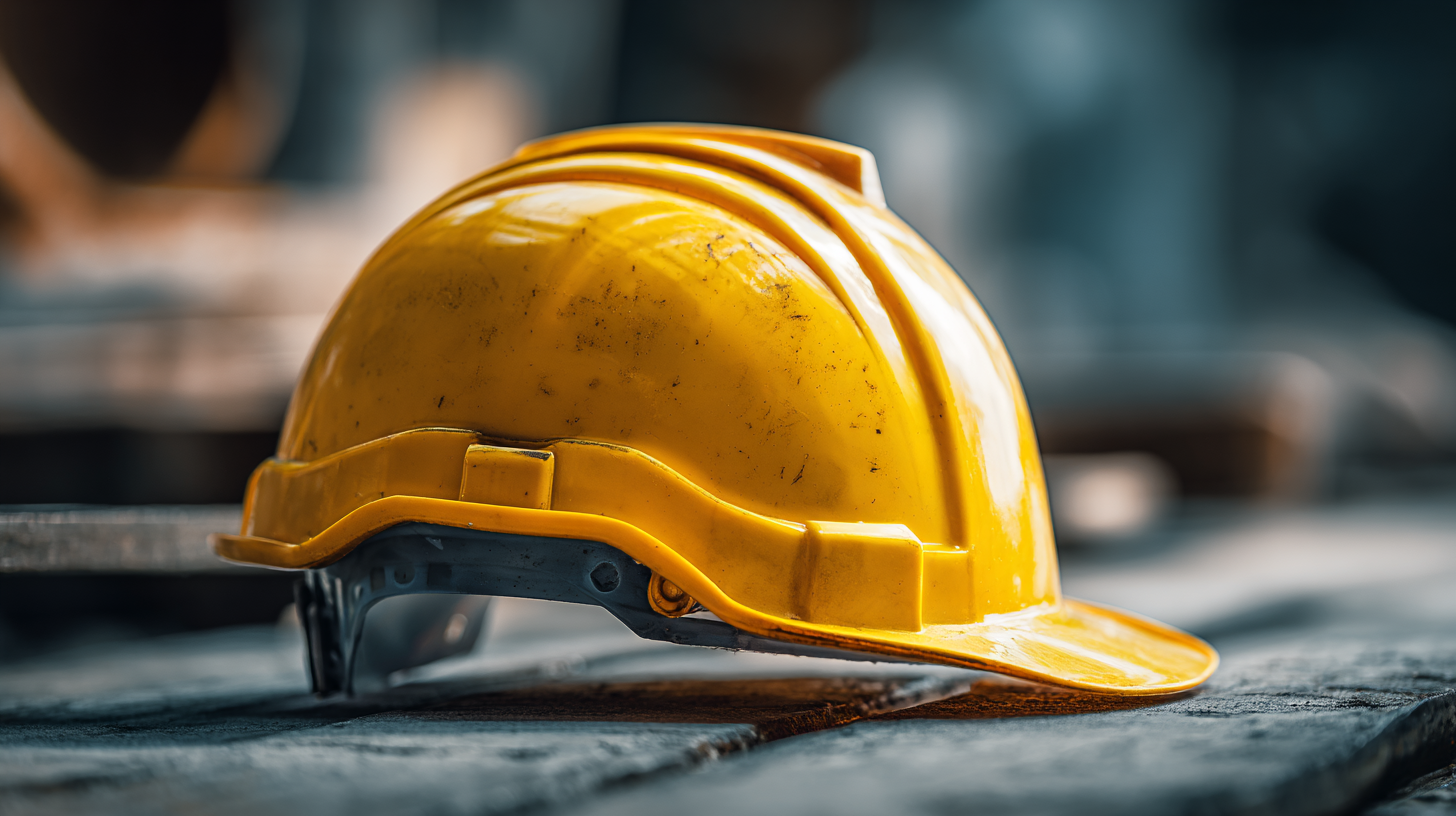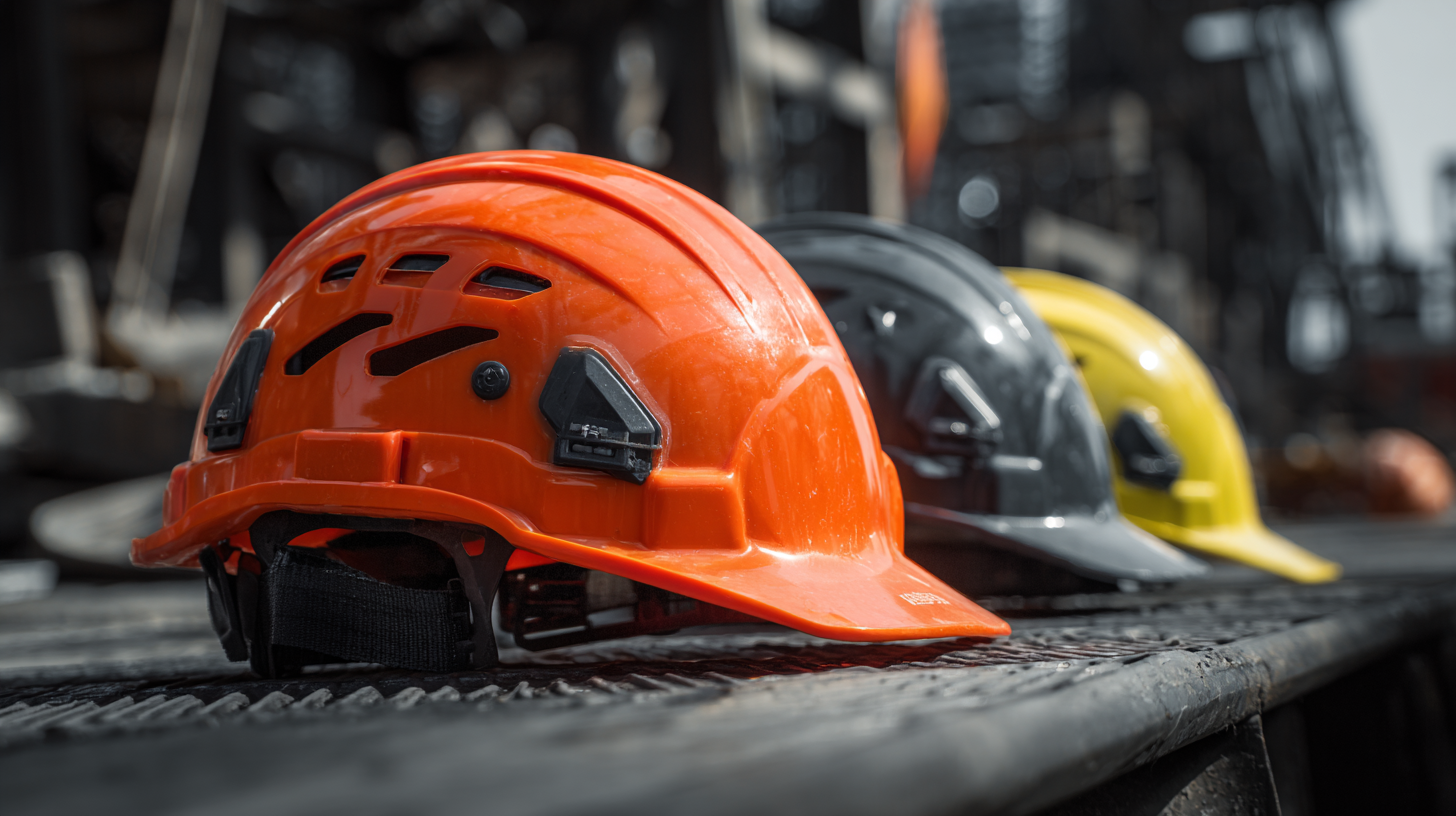Understanding the Unique Features and Usage Scenarios of the Best Hard Hats
In the world of construction, manufacturing, and various industrial sectors, safety is paramount, and one of the most recognizable symbols of safety gear is the hard hat. Understanding the unique features and usage scenarios of hard hats is essential for ensuring optimal protection in demanding work environments. These helmets are not just a legal requirement; they are a critical line of defense against head injuries caused by falling objects, bumps, and electrical hazards. Each type of hard hat offers distinct benefits tailored to specific applications, and selecting the right one can make all the difference in a worker's safety and comfort.
In this blog, we will explore the various types of hard hats available on the market, their unique characteristics, and the scenarios in which each is most effectively utilized, helping you make an informed decision for your safety needs.
The Evolution of Hard Hats: From Basic Safety Gear to High-Tech Solutions
The evolution of hard hats has been remarkable, transforming from simple head protection to sophisticated safety equipment equipped with advanced technology. In the early days, hard hats were primarily made of metal or porous materials, providing basic protection against falling objects. As workplace safety regulations became more stringent, manufacturers began enhancing hard hats with better impact resistance and comfort features, paving the way for modern designs that include ventilation and lightweight materials.
As technology progressed, hard hats incorporated additional functionalities. Today, high-tech solutions like built-in communication systems, sensors to detect environmental hazards, and smart lighting features are becoming commonplace. These innovations not only improve safety but also enhance the efficiency of workers in hazardous settings.
**Tip:** When selecting a hard hat, consider your specific workplace environment and the potential hazards you may encounter. Look for models that offer features tailored to those risks, such as high visibility for roadside work or heat resistance for foundries.
Furthermore, proper fit and comfort should not be overlooked, as an ill-fitting hard hat can compromise safety. Ensure that the hard hat sits snugly on your head and adjust the suspension system for optimal comfort. Test the weight of the hard hat, as lighter options are often easier to wear for extended periods.
Key Features to Look for in Modern Hard Hats
When selecting a hard hat, it's essential to understand the key features that make one helmet superior to another. One of the most significant aspects to consider is the material of the hard hat. Modern hard hats are typically crafted from high-density polyethylene (HDPE) or thermoplastic, which provides excellent protection against impact and penetration. Additionally, look for hats that meet or exceed safety standards set by organizations like ANSI or OSHA to ensure optimal safety in various work environments.

Another important feature is the suspension system within the hard hat. A good suspension not only enhances comfort but also stabilizes the hard hat on the wearer’s head. Adjustable straps and moisture-wicking liners can significantly improve the fit and usability, making it easier to wear the hard hat for extended periods. Furthermore, consider additional options like integrated face shields, hearing protection, or reflective tape for enhanced visibility. These features can make a significant difference depending on the usage scenario, whether on a construction site, in industrial settings, or for outdoor activities.
Real-Life Usage Scenarios: Choosing the Right Hard Hat for Different Industries
When selecting the right hard hat for various industries, understanding the unique features and usage scenarios is crucial. For instance, in
construction, hard hats must provide high-impact resistance due to the presence of falling objects. According to recent studies, approximately
90,000 construction workers are injured annually from head-related incidents, emphasizing the need for compliance with safety standards
like ANSI Z89.1. In these environments, hard hats equipped with advanced suspension systems and ventilation can significantly improve comfort without compromising safety.

In manufacturing, where workers might be exposed to electrical hazards, choosing hard hats with
dielectric properties is essential. The integration of smart wearable technologies into hard hats has also gained momentum, with reports highlighting that the workplace safety sector is evolving, leveraging IoT solutions to enhance real-time monitoring of worker health and safety.
Implementing wearable devices can reduce workplace accidents by up to
30%, making it a critical factor for organizations.
Tips: Always verify the certification of hard hats based on your specific industry requirements. Additionally, consider options that include features tailored to environmental conditions,
such as heat resistance for welding applications, to optimize both safety and performance in your workplace.
Maximizing Safety: Additional Accessories for Enhanced Hard Hat Functionality
When it comes to maximizing safety in hazardous environments, hard hats are essential, but their functionality can be significantly enhanced with additional accessories. Among these, headlamps stand out as a crucial addition. Working in dimly lit conditions or trenches often poses visibility challenges. A sturdy headlamp securely attached to the hard hat can illuminate dark work areas, allowing for improved focus and reducing the risk of accidents. Not only does this promote safety, but it also enhances productivity by enabling workers to navigate their surroundings more efficiently.
In addition to lighting solutions, communication systems are increasingly popular among hard hat accessories. Integrated communication devices can facilitate clear and constant communication among team members, which is critical in environments with high noise levels or where distance makes verbal communication difficult. These systems often connect wirelessly, allowing workers to communicate hands-free while maintaining full attention on their tasks. By investing in such accessories, companies ensure that their workforce remains connected and safe, ultimately leading to better outcomes in various work scenarios.
Understanding Hard Hat Features and Usage Scenarios
Future Trends in Hard Hat Technology: What to Expect in the Coming Years
The future of hard hat technology is poised for remarkable advancements, driven by the increasing focus on worker safety and innovation in wearable technology. As highlighted by recent reports, the global market for human safety wearables is projected to reach $282.9 million by 2025, with an astronomical growth trajectory expected to soar to $1.248 billion by 2033, translating to a compound annual growth rate of 20.4%. This surge signals a burgeoning interest in integrating smart technologies into personal protective equipment, specifically hard hats.
Emerging features in hard hats are likely to include connectivity with other safety systems and real-time health monitoring capabilities. As construction and industrial sectors embrace the Internet of Things (IoT), these helmets can incorporate sensors that detect environmental hazards and monitor user vitals to enhance on-site safety. Furthermore, advancements in materials science may lead to the development of lighter, more durable hard hats that offer improved comfort without compromising protection.
The integration of augmented reality (AR) into hard hat design represents a significant leap forward. With AR capabilities, workers could access essential information hands-free, improving efficiency and reducing the likelihood of accidents. As the demand for smarter safety gear grows, stakeholders in various industries must stay abreast of these trends to leverage new technologies that ensure not just compliance, but also the highest standards of safety for their workforce.
Understanding the Unique Features and Usage Scenarios of the Best Hard Hats
| Feature |
Description |
Usage Scenario |
Future Trends |
| Material |
High-density polyethylene (HDPE) or fiberglass for durability |
Construction sites, industrial workplaces |
Increased focus on eco-friendly materials |
| Retention System |
Adjustable chin straps and suspension systems |
Maintenance, high-activity job sites |
Smart retention systems with sensors |
| Ventilation |
Integrated ventilation systems to reduce heat |
Hot weather conditions, outdoor work |
Innovative designs for enhanced airflow |
| Weight |
Lightweight options to reduce fatigue |
Long-duration tasks, assembly lines |
Technological advancements making hats even lighter |
| Communication Features |
Integrated communication systems for teamwork |
Construction projects, emergency services |
Enhanced connectivity with mobile devices |





